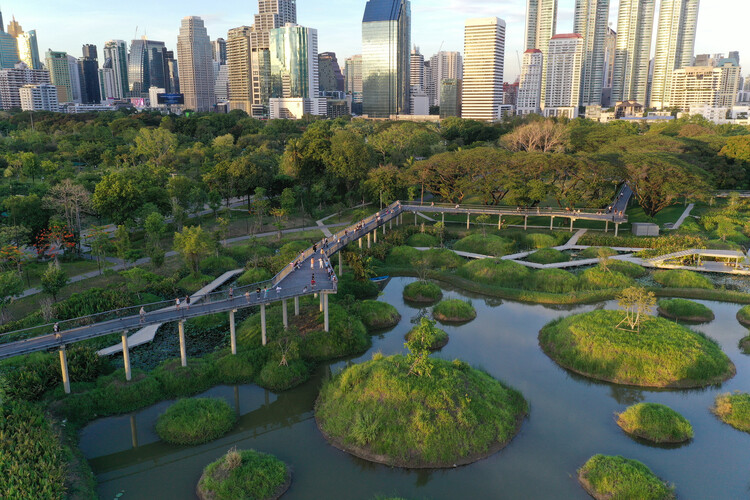 Second Cycle Category 4: Access to green and public space winner, WiBenjakitti Forest Park by Arsomsilp Community and Environmental Architect Co. Ltd., + Turenscape. Image © Srirath Somsawat
Second Cycle Category 4: Access to green and public space winner, WiBenjakitti Forest Park by Arsomsilp Community and Environmental Architect Co. Ltd., + Turenscape. Image © Srirath Somsawat
Share
Or
https://www.archdaily.com/1032623/uia-2030-award-launches-its-third-cycle-highlighting-sustainable-development-goals
The International Union of Architects (UIA), in collaboration with UN-Habitat, has announced the launch of the third cycle of the UIA 2030 Award. Introduced in 2021, the biennial international prize highlights the role of architecture in advancing the UN 2030 Agenda for Sustainable Development, with a particular emphasis on SDG11: Sustainable Cities and Communities and the New Urban Agenda. Organized by the UIA‘s UN 17 SDGs Commission, the award recognizes built projects that combine architecture with measurable contributions to the Sustainable Development Goals (SDGs). Structured to coincide with the schedule of the World Urban Forum (WUF), the award will run through five cycles.
Key dates for the third cycle include the launch on 29 July 2025, with the deadline for inquiries set for 26 August and responses published by 2 September. Submissions for Stage 1 are due by 29 October, and Stage 2 submissions will close on 6 March 2026, ahead of the final announcement of winners during WUF13 in May 2026, in Baku, Azerbaijan, and will be featured across both UIA and UN-Habitat platforms, including the 2026 UIA World Congress in Barcelona.
The jury for this edition includes Peter Oborn, Natalie Mossin, Tina Saaby, Nadia Habash, Anna Rubbo, Rob Adams, and Nadia Tromp. The alternate juror is Ishtiaque Zahir Titas, and Iman Gawad joins the process as an SDG expert observer on the Technical Committee. The selection process will unfold in two stages. In the first stage, submissions will be reviewed on a regional basis, reflecting the UIA‘s five global regions. Jurors will select between one and three Regional Finalists in each category to advance to the second stage. The region of evaluation will be determined by the location of the project. Entries will be judged according to their effectiveness in addressing the targeted SDG principles and the New Urban Agenda, with attention to building performance and impact, design quality, including functionality, durability, and contextual sensitivity, and the degree to which they demonstrate a holistic, life-cycle-oriented approach.
Related Article UIA Announces Winners of the Second Cycle of the 2030 Award for Sustainable Architecture 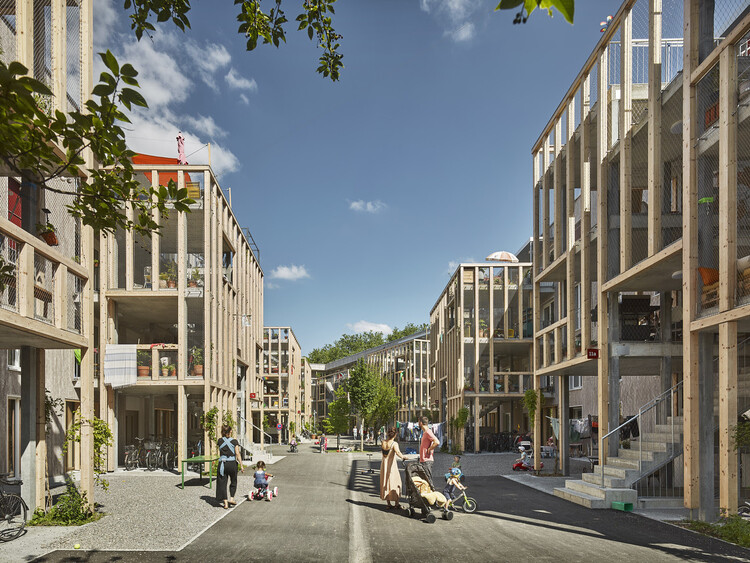 Second Cycle Category 2: Adequate, safe and affordable housing winner, Huebergass Berne by GWJ Architektur AG, Switzerland. Image © UIA 2030 Awards
Second Cycle Category 2: Adequate, safe and affordable housing winner, Huebergass Berne by GWJ Architektur AG, Switzerland. Image © UIA 2030 Awards
The UIA 2030 Award will recognize built projects across six categories, each aligned with specific Sustainable Development Goals, highlighting architecture’s capacity to address pressing global challenges through design. Aligned with SDG 6.3 (Progress on Wastewater Treatment), the category Ensure Availability and Sustainable Management of Water and Sanitation for All focuses on projects that contribute to improving water quality by reducing pollution, minimizing hazardous discharges, and increasing recycling and safe reuse. As buildings and infrastructure are closely linked to water systems, this category emphasizes how design can support sustainable water management and healthier urban environments.
The category Protect Labour Rights and Promote Safe Working Environments, aligned with SDG 8.8, recognizes projects that promote safe, secure, and inclusive workplaces for all. Architectural design influences working conditions through layout, ventilation, lighting, and materials, shaping environments that support the health, safety, and well-being of occupants, particularly in contexts involving vulnerable or precarious labor. Adequate, Safe, and Affordable Housing, corresponding to SDG 11.1, acknowledges projects that improve access to secure and affordable housing. The category includes efforts in new construction, urban regeneration, and slum upgrading as architecture plays a significant role in delivering quality housing that meets basic needs while responding to demographic, economic, and climatic challenges.
In line with SDG 11.3, Participatory, Land-use Efficient, and Inclusive Planning highlights projects that contribute to more inclusive, integrated, and sustainable approaches to human settlement planning. The built environment is shaped by decisions on land use and density, and this category reflects the importance of participatory and equitable planning processes in urban development. Access to Green and Public Space, aligned with SDG 11.7, focuses on projects that expand access to safe, inclusive, and accessible public spaces. As urban areas become more compact, the design and maintenance of parks, plazas, and other open spaces are essential to supporting physical and mental health, social interaction, and urban biodiversity. The final category, Strengthen Resilience and Adaptive Capacity to Climate-related Disasters, corresponds with SDG 13.1. It recognizes projects that incorporate strategies to reduce exposure and vulnerability to climate-related risks. Through decisions related to siting, materials, structure, and performance, it highlights that architecture can support resilience and long-term adaptability in the face of environmental change.
Since its launch in 2021, the UIA 2030 Award has spotlighted architectural projects that advance the UN Sustainable Development Goals, showcasing a diverse range of approaches to global sustainability challenges. The winners of the second cycle, announced last year, include notable projects such as Benjakitti Forest Park in Thailand by Arsomsilp Community and Environmental Architect, with Turenscape as design consultant; the series of chapels in Ruesta, Spain, by Sebastián Arquitectos SLP; and ETC Bygg in Sweden by Kaminsky Arkitektur AB and Arkitekt Hans Eek AB, among others.

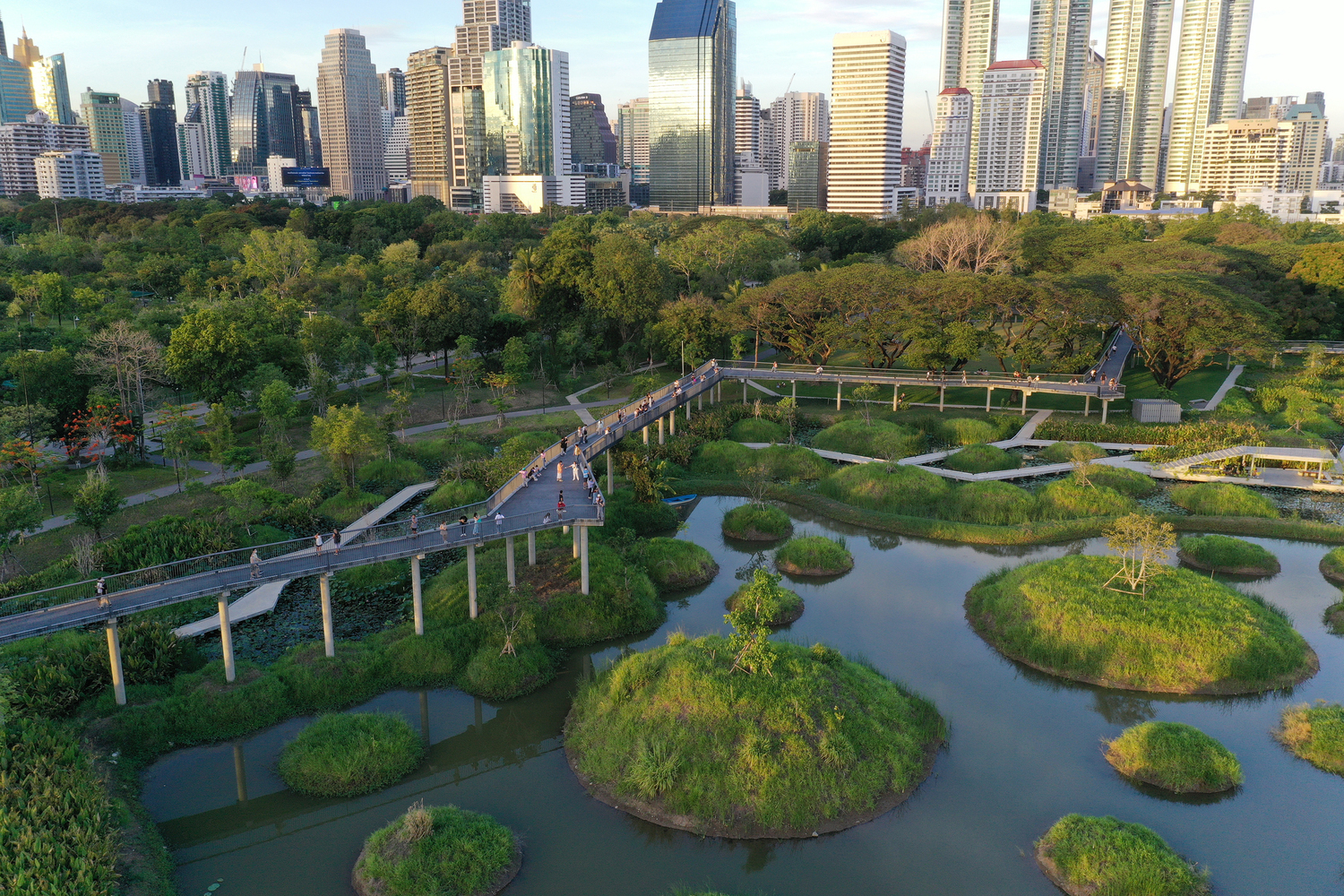
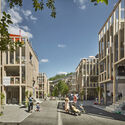

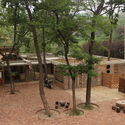
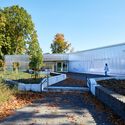
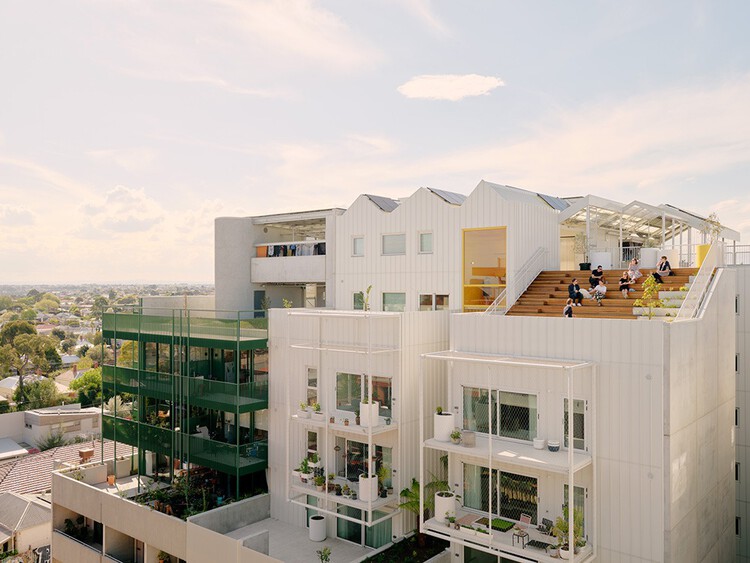 Second Cycle Category 2: Adequate, safe and affordable housing winner, Nightingale Village by ℅ Nightingale Housing, Australia. Image © UIA 2030 Awards
Second Cycle Category 2: Adequate, safe and affordable housing winner, Nightingale Village by ℅ Nightingale Housing, Australia. Image © UIA 2030 Awards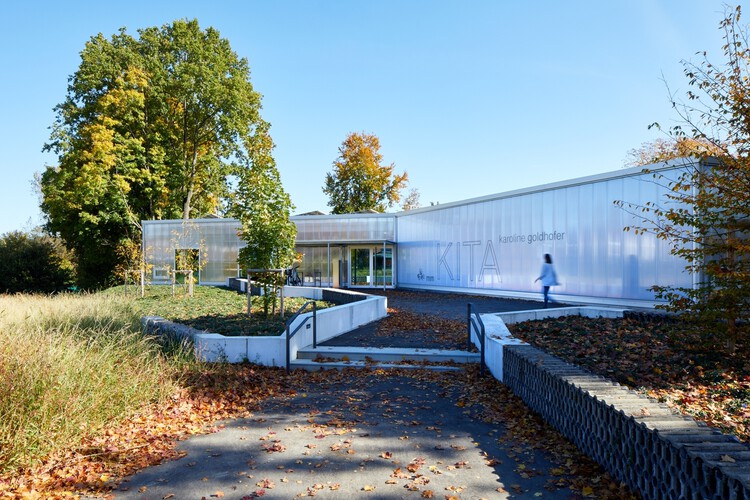 First Cycle Category 2: Improving Energy Efficiency Winner, Karoline Goldhofer Daycare Centre by Heilergeiger Architekten und Stadtplaner BDA. Image © Nicolas Felder Fotografie
First Cycle Category 2: Improving Energy Efficiency Winner, Karoline Goldhofer Daycare Centre by Heilergeiger Architekten und Stadtplaner BDA. Image © Nicolas Felder Fotografie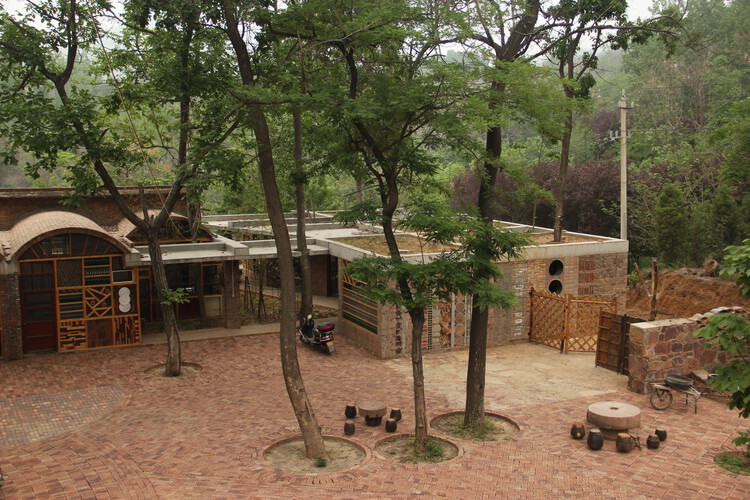 First Cycle Category 6: Utilizing Local Materials Winner, House of Dreams by Kuo Jze Yi and Peter Hasdell, Insitu Project, School of Design, The Hong Kong Polytechnic University. Image Courtesy of Insitu Project
First Cycle Category 6: Utilizing Local Materials Winner, House of Dreams by Kuo Jze Yi and Peter Hasdell, Insitu Project, School of Design, The Hong Kong Polytechnic University. Image Courtesy of Insitu Project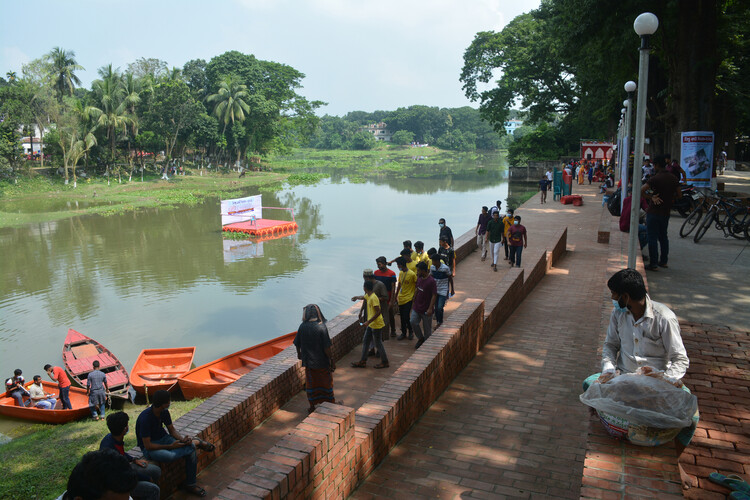 First Cycle Category 5: Access to Green & Public Space Winner, Co-creation of Urban Spaces by the Nobogonga River. Image Courtesy of Co.Creation.Architects, Jhenaidah Citywide People’s Network, Platform of Community Action and Architecture (POCAA), Community Architects Network (CAN)
First Cycle Category 5: Access to Green & Public Space Winner, Co-creation of Urban Spaces by the Nobogonga River. Image Courtesy of Co.Creation.Architects, Jhenaidah Citywide People’s Network, Platform of Community Action and Architecture (POCAA), Community Architects Network (CAN)